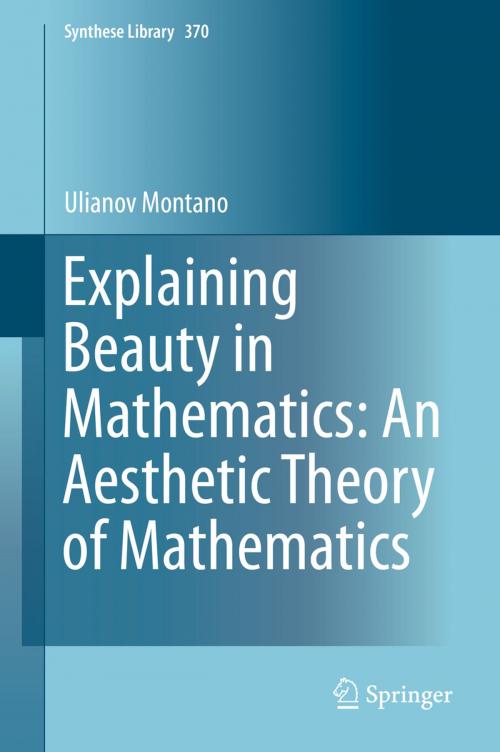Explaining Beauty in Mathematics: An Aesthetic Theory of Mathematics
Nonfiction, Science & Nature, Mathematics, Logic, Religion & Spirituality, Philosophy| Author: | Ulianov Montano | ISBN: | 9783319034522 |
| Publisher: | Springer International Publishing | Publication: | December 20, 2013 |
| Imprint: | Springer | Language: | English |
| Author: | Ulianov Montano |
| ISBN: | 9783319034522 |
| Publisher: | Springer International Publishing |
| Publication: | December 20, 2013 |
| Imprint: | Springer |
| Language: | English |
This book develops a naturalistic aesthetic theory that accounts for aesthetic phenomena in mathematics in the same terms as it accounts for more traditional aesthetic phenomena. Building upon a view advanced by James McAllister, the assertion is that beauty in science does not confine itself to anecdotes or personal idiosyncrasies, but rather that it had played a role in shaping the development of science. Mathematicians often evaluate certain pieces of mathematics using words like beautiful, elegant, or even ugly. Such evaluations are prevalent, however, rigorous investigation of them, of mathematical beauty, is much less common. The volume integrates the basic elements of aesthetics, as it has been developed over the last 200 years, with recent findings in neuropsychology as well as a good knowledge of mathematics.
The volume begins with a discussion of the reasons to interpret mathematical beauty in a literal or non-literal fashion, which also serves to survey historical and contemporary approaches to mathematical beauty. The author concludes that literal approaches are much more coherent and fruitful, however, much is yet to be done. In this respect two chapters are devoted to the revision and improvement of McAllister’s theory of the role of beauty in science. These antecedents are used as a foundation to formulate a naturalistic aesthetic theory. The central idea of the theory is that aesthetic phenomena should be seen as constituting a complex dynamical system which the author calls the aesthetic as process theory.
The theory comprises explications of three central topics: aesthetic experience (in mathematics), aesthetic value and aesthetic judgment. The theory is applied in the final part of the volume and is used to account for the three most salient and often used aesthetic terms often used in mathematics: beautiful, elegant and ugly. This application of the theory serves to illustrate the theory in action, but also to further discuss and develop some details and to showcase the theory’s explanatory capabilities.
This book develops a naturalistic aesthetic theory that accounts for aesthetic phenomena in mathematics in the same terms as it accounts for more traditional aesthetic phenomena. Building upon a view advanced by James McAllister, the assertion is that beauty in science does not confine itself to anecdotes or personal idiosyncrasies, but rather that it had played a role in shaping the development of science. Mathematicians often evaluate certain pieces of mathematics using words like beautiful, elegant, or even ugly. Such evaluations are prevalent, however, rigorous investigation of them, of mathematical beauty, is much less common. The volume integrates the basic elements of aesthetics, as it has been developed over the last 200 years, with recent findings in neuropsychology as well as a good knowledge of mathematics.
The volume begins with a discussion of the reasons to interpret mathematical beauty in a literal or non-literal fashion, which also serves to survey historical and contemporary approaches to mathematical beauty. The author concludes that literal approaches are much more coherent and fruitful, however, much is yet to be done. In this respect two chapters are devoted to the revision and improvement of McAllister’s theory of the role of beauty in science. These antecedents are used as a foundation to formulate a naturalistic aesthetic theory. The central idea of the theory is that aesthetic phenomena should be seen as constituting a complex dynamical system which the author calls the aesthetic as process theory.
The theory comprises explications of three central topics: aesthetic experience (in mathematics), aesthetic value and aesthetic judgment. The theory is applied in the final part of the volume and is used to account for the three most salient and often used aesthetic terms often used in mathematics: beautiful, elegant and ugly. This application of the theory serves to illustrate the theory in action, but also to further discuss and develop some details and to showcase the theory’s explanatory capabilities.















